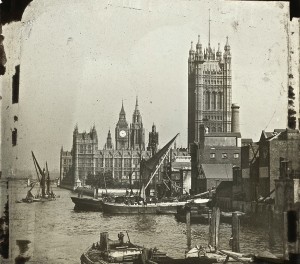Introducing May Rainer (b. 1909)
‘An historic event always has its details preserved.’ (Rainer, 7)

May Rainer was born into a working-class family in Fulham, London in 1909, at a time when wages were low and every penny had to be counted. She writes that people bought what was essential and had rarely any money left to spend on luxuries. Rainer states that it was a simpler time where people were content with making their own entertainment because that was all they knew. This is something that stayed with Rainer throughout her life; she was always cautious with money, as she had been brought up as a working class woman.
Rainer’s parents struggled with money throughout their lives, which affected Rainer’s education, as she had to leave school at the age of fourteen because her parents could no longer afford for her to continue her studies. Although she left school at an early age, she was fortunate to have an education as a girl in the early 20th century without being made to stay at home and help her mother. She enjoyed reading and it is clear that she did well in school, as her memoir is well written with very few spelling mistakes. The memoir is written on a typewriter, with 23 chapters, each with a different title discussing a different time of her life. Her memoir begins with her Grandfather’s experience in the war, way before she was born. Her pride in her Grandfather compelled her to begin writing her own memoir.
At the early age of fifteen, Rainer knew instantly that she wanted more from life than her parents had. ‘I made up my mind that I would get myself a situation where I could live in, and so run my life as I wanted to…’ (Rainer, 67). Her determination, which is seen throughout her memoir, made me interested in her autobiography to begin with.

Rainer’s memoir reflects on growing up in a working-class family during the 20th century and the hardships of being a woman at this time. She writes about living through both world wars, getting married and raising her children whilst being a working woman. She took chances and moved houses numerous times, and she was continuously changing her job. She was adventurous and was fortunate enough to travel, as travelling was something new in the early 20th century that not many people could afford.
Although Rainer lived in a patriarchal society, she never let a man rule her life. ‘No one was going to own me, I had then, as I have now a mind of my own’ (Rainer, 58). Her valiant attitude at a time when women were often passive and obedient captured my attention. She identifies as a feminist in her memoir a number of times and writes about the changes that happened for women during her lifetime, including women going to work and getting the vote after years of struggling and protesting. She was proud to see how far women had come along, and recognised that they still had a way to go.
What separates Rainer from other working class people writing about their lives is that her memoir has sections on different family members. She did not only write about her own life, but she also included descriptions of her family members. She wants their story to be told too, so the future generations of her family can know about their ancestors’ lives and personalities. She had also experienced a traumatic event which has left her partly blind, so she found writing therapeutic.
Bibliography
Gagnier, Regenia. 30.3 (1987): 335-363
Rainer, May, Emma’s Daughter, May 20th 1977, Brunel University, July 1977, Vol 2. 0644
The Thames of Old London – http://spitalfieldslife.com/2013/04/30/the-thames-of-old-london/ (28/10/2015)
May A.M Rainer- http://connect.ancestry.com/profile/0185f15d-0002-0000-0000-000000000000

Leave a Reply